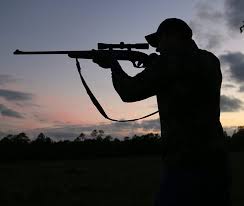
Breaking News
 Quantum walkie-talkie: China tests world's first GPS-free radio for border zones
Quantum walkie-talkie: China tests world's first GPS-free radio for border zones
 RIGHT NOW!: Why was lawyer Van Kessel, of the civil case on the merits in the Netherlands, arrested?
RIGHT NOW!: Why was lawyer Van Kessel, of the civil case on the merits in the Netherlands, arrested?
 PENSION FUNDS PANIC BUYING SILVER – Ratio Below 60 Triggers $50B Wave (Danger Next Week)
PENSION FUNDS PANIC BUYING SILVER – Ratio Below 60 Triggers $50B Wave (Danger Next Week)
 Dollar set for worst year since 2017, yen still in focus
Dollar set for worst year since 2017, yen still in focus
Top Tech News
 EngineAI T800: Born to Disrupt! #EngineAI #robotics #newtechnology #newproduct
EngineAI T800: Born to Disrupt! #EngineAI #robotics #newtechnology #newproduct
 This Silicon Anode Breakthrough Could Mark A Turning Point For EV Batteries [Update]
This Silicon Anode Breakthrough Could Mark A Turning Point For EV Batteries [Update]
 Travel gadget promises to dry and iron your clothes – totally hands-free
Travel gadget promises to dry and iron your clothes – totally hands-free
 Perfect Aircrete, Kitchen Ingredients.
Perfect Aircrete, Kitchen Ingredients.
 Futuristic pixel-raising display lets you feel what's onscreen
Futuristic pixel-raising display lets you feel what's onscreen
 Cutting-Edge Facility Generates Pure Water and Hydrogen Fuel from Seawater for Mere Pennies
Cutting-Edge Facility Generates Pure Water and Hydrogen Fuel from Seawater for Mere Pennies
 This tiny dev board is packed with features for ambitious makers
This tiny dev board is packed with features for ambitious makers
 Scientists Discover Gel to Regrow Tooth Enamel
Scientists Discover Gel to Regrow Tooth Enamel
 Vitamin C and Dandelion Root Killing Cancer Cells -- as Former CDC Director Calls for COVID-19...
Vitamin C and Dandelion Root Killing Cancer Cells -- as Former CDC Director Calls for COVID-19...
 Galactic Brain: US firm plans space-based data centers, power grid to challenge China
Galactic Brain: US firm plans space-based data centers, power grid to challenge China
Hunting and prepping food safety tips: How to ensure wild game meat is safe to eat

One wrong decision could lead to a range of consequences, from an inconvenient mild stomachache to a life-threatening illness.
For seasoned hunters, this is a familiar challenge, but for preppers and survivalists who may not hunt regularly, the ability to assess the safety of wild game is not just a skill, it's a necessity. (h/t to Survivopedia.com)
Assessing wild game: Beyond the basics
While a quick sniff or glance might suffice in some situations, truly ensuring the safety of wild game meat requires a more nuanced approach.
Here's a comprehensive guide to help you make that crucial decision:
Smell test
The smell of meat can tell you a lot about its condition, but it's important to know what to look for beyond the obvious signs of rot.
Ammonia-like sharpness – This could suggest spoilage or urine contamination, especially if the animal wasn't field-dressed properly.
A sour or fermented smell odor – This indicates that bacteria are already breaking down the meat, making it unsafe to eat.
Sweet but off scent – Spoiled meat can sometimes develop a sickly-sweet scent before becoming overtly rancid.
If you're unsure, cut into a deeper section of the meat being prepared. Surface smells can sometimes be misleading, and the inside might give you more information.
Color and texture
The appearance of the meat can also provide vital clues about its safety.
Here are some normal meat colors to keep in mind:
Bear and wild boar meat – Is usually darker red, but can be almost maroon.
Bird and rabbit meat – Is usually pinkish-white to light red.
Venison – Is deep red to purplish when fresh, but can become darker after exposure.



